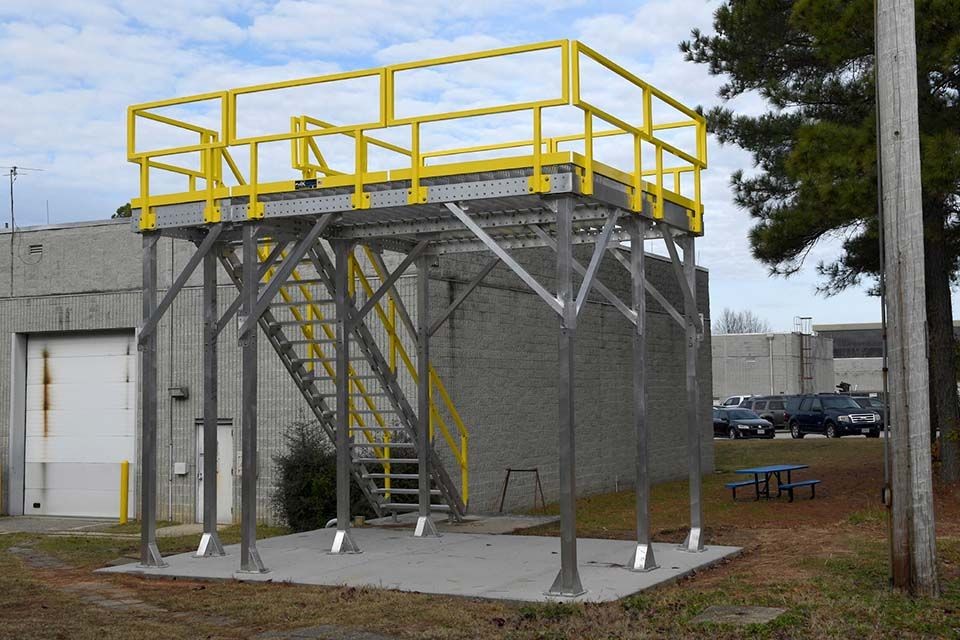
IntroductionIndustrial Working Platforms
In today’s fast-paced industrial landscape, optimizing efficiency and productivity is paramount for staying competitive. One significant solution gaining traction is the utilization of industrial working platforms. These platforms offer multifaceted advantages, ranging from enhanced safety to streamlined operations. Let’s delve deeper into how these platforms revolutionize industrial environments.
Understanding Industrial Working Platforms
Industrial working platforms encompass a diverse array of structures designed to facilitate various tasks within industrial settings. From scaffolding systems to aerial work platforms, these platforms cater to different needs across industries. Understanding their types and applications is crucial for harnessing their benefits effectively.
Benefits of Industrial Working Platforms
Enhanced Safety Measures
Industrial platforms prioritize worker safety by providing stable working environments, reducing the risk of accidents and injuries.
Time Efficiency
By offering convenient access to elevated areas and equipment, industrial platforms minimize downtime and enhance overall operational efficiency.
Space Optimization
In congested industrial settings, utilizing vertical space through platforms maximizes available workspace, contributing to better resource utilization.
Implementation of Industrial Platforms
Installation Process
Installing industrial platforms involves meticulous planning and adherence to safety standards to ensure structural integrity and stability.
Maintenance and Upkeep
Regular maintenance is essential to uphold the functionality and safety of industrial platforms, prolonging their lifespan and performance.
Case Studies
Exploring real-world examples of successful industrial platform implementations provides valuable insights into their efficacy and impact on productivity.
Tips for Choosing Industrial Platforms
Factors to Consider
When selecting industrial platforms, factors such as load capacity, mobility, and compliance with regulations play pivotal roles.
Comparison Table
A comprehensive comparison table showcasing various industrial platform options aids decision-making by highlighting key features and benefits.
Challenges and Solutions
Common Hurdles
Addressing challenges such as cost constraints and regulatory compliance ensures smooth integration of industrial platforms into existing workflows.
Strategies for Overcoming
Implementing proactive measures, such as employee training programs and regular safety audits, mitigates challenges and fosters seamless operations.
Future Trends
As technology continues to evolve, industrial platforms are poised to undergo significant advancements, catering to emerging industry needs and trends.
FAQ
How do industrial working platforms enhance worker safety?
Industrial working platforms enhance worker safety by providing stable and secure elevated surfaces for tasks such as maintenance, repairs, and inspections. By offering a stable working environment, these platforms reduce the risk of falls and accidents, ensuring the safety of workers operating at height.
What factors should I consider when choosing an industrial platform?
When choosing an industrial platform, several factors should be considered, including:
Load capacity: Ensure the platform can support the weight of workers and equipment.
Mobility: Consider whether the platform needs to be moved frequently and if it requires features like wheels or adjustable heights.
Compliance with regulations: Ensure the platform meets safety standards and regulations relevant to your industry.
Accessibility: Choose a platform that provides easy access to the areas where work needs to be performed.
Durability: Opt for platforms made from high-quality materials that can withstand the rigors of industrial use.
Are there any regulations governing the installation of industrial platforms?
Yes, there are regulations governing the installation of industrial platforms to ensure worker safety and compliance with industry standards. These regulations may vary depending on factors such as the type of platform, its intended use, and the jurisdiction in which it is installed. It’s essential to consult relevant regulations and standards and ensure compliance during the installation process.
Can industrial platforms improve operational efficiency in small-scale industries?
Yes, industrial platforms can improve operational efficiency in small-scale industries by providing safe and convenient access to elevated areas and equipment. By optimizing workspace utilization and reducing downtime, these platforms help streamline operations and enhance overall productivity, regardless of the scale of the industry.
What maintenance practices are recommended for industrial platforms?
Recommended maintenance practices for industrial platforms include:
Regular inspections to identify and address any signs of wear, damage, or deterioration.
Cleaning to remove debris, grease, or other contaminants that may compromise safety or functionality.
Lubrication of moving parts to ensure smooth operation and prevent corrosion.
Repairs or replacement of damaged components to maintain structural integrity and safety.
Employee training to ensure proper use and maintenance of the platforms according to manufacturer guidelines and safety standards.
How do industrial platforms contribute to space optimization in industrial settings?
Industrial platforms contribute to space optimization in industrial settings by utilizing vertical space effectively. By providing elevated work surfaces and access to overhead areas, these platforms maximize available workspace, allowing for more efficient storage, assembly, and workflow organization. This optimization of space helps businesses make the most of their existing facilities and resources, leading to improved productivity and profitability.
Conclusion
Industrial working platforms represent a cornerstone in modern industrial operations, offering unparalleled efficiency gains and safety enhancements. By understanding their applications, benefits, and challenges, businesses can harness their full potential to drive productivity and success in today’s dynamic marketplace.
